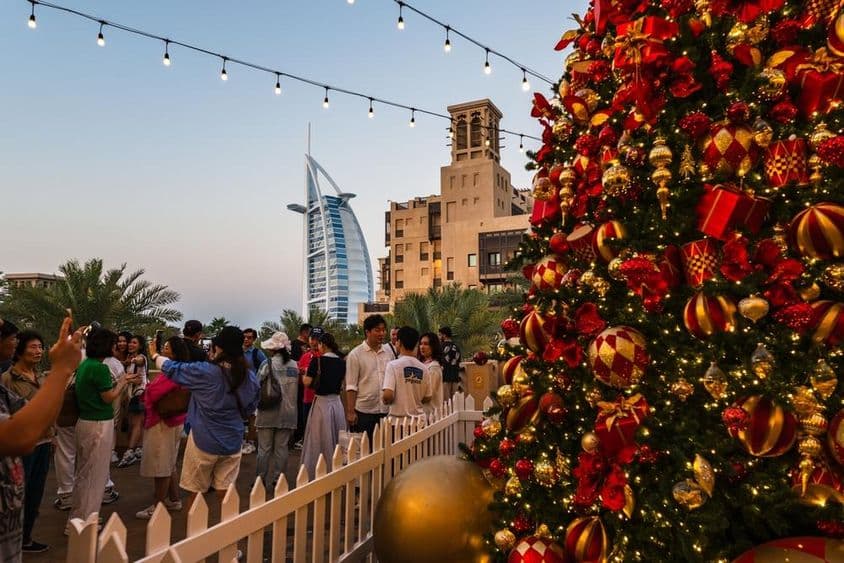Desert Winter: UAE Welcomes Darbet Al Ahaymar

Winter Officially Arrives in UAE: Welcome Darbet Al Ahaymar Period
The weather in the United Arab Emirates has recently reached a new turning point: a significant drop in temperatures and rain on the western islands have officially signaled the arrival of winter. With the onset of the "Darbet Al Ahaymar" phenomenon, a key event in the regional weather cycle, one of the most anticipated times of the year has begun – the cool, rainy, yet highly enjoyable desert winter.
What is Darbet Al Ahaymar?
Darbet Al Ahaymar is a traditionally known weather period marking the start of winter on the Arabian Peninsula. Its name refers to the sudden temperature drop and unstable atmospheric conditions. During this phenomenon, rain, storms, and even hail occur frequently, especially in Saudi Arabia, where significant rainfall has already been reported in the Mecca region this year. Although the extreme weather effects are currently more moderate in the UAE, the recent days have also seen a considerable drop in temperature here.
Minimum values have reached 7°C, while in several parts of the country, daytime maximums have been recorded around 16°C. At this time of the year, it's already enough for residents to bring out their warmer clothing and set out to explore the winter adventures offered by the desert.
Weather Calendar Guided by Stars
According to local astronomical traditions, the "Duroor" calendar ties weather cycles to astronomical observations. Based on this, winter officially begins approximately 100 days after the appearance of the Suhail star. The current period – or the first ten days – coincides with the Darbet Al Ahaymar period, a precursor to the coldest months. Winter is expected to last until March 4, providing a favorable time for nature enthusiasts, hikers, and campers for three months.
What to Expect in the Coming Months?
Compared to other times of the year, the region has relatively low precipitation, but some rain is still expected during the winter months. Experts estimate an average of 15 mm of rainfall per month in December, January, and February.
An extremely cold period is also forecasted for January: in the country's more desert regions, temperatures may drop below 0°C, which is unusually low for UAE's climate conditions.
This period is special not only in terms of weather but also culturally: this is when desert life truly picks up, as both locals and tourists most prefer visiting the oases, dunes, and nature reserves.
Winter: The Time for Leisure and Nature
In the UAE, winter marks the real season for outdoor activities. Milder weather allows for camping, hiking, jeep tours, as well as beach and desert picnics. The desert is not just a spectacle but also a living ecosystem particularly sensitive to environmental impacts.
Therefore, authorities and conservation organizations emphasize every year how important it is to behave environmentally consciously. Participants in outdoor activities are asked not to damage the vegetation, leave no litter behind, and pay particular attention to preserving the Ghaf and Samar trees, symbols of desert life.
These trees not only have aesthetic value but also play a key ecological role: they provide shade, stabilize the soil, and offer shelter to numerous living organisms. The desert ecosystem – though it may seem desolate at first glance – is a rich and sensitive system that human presence can seriously endanger.
What Should We Pay Attention to When Going Hiking?
Those wanting to take advantage of the winter opportunities should plan ahead. For desert tours, it's always recommended to use a reliable vehicle, ensure an adequate supply of drinking water, warm clothing, and, of course, navigation devices. The nights can cool off quickly, and although the days can be pleasantly warm, the temperature fluctuations can surprise many.
Particularly those traveling with children or pets should pay attention to temperature changes and set up camp only in designated, permitted areas.
Summary
The winter period in the United Arab Emirates officially commenced with the arrival of the Darbet Al Ahaymar. Over the coming months, the cooler and more variable weather not only brings relief after the hot summer months but also offers countless opportunities for lovers of nature and outdoor experiences.
The emphasis on local astronomical traditions, the desert environment, and ecological responsibility all contribute to making the winter season not just a meteorological cycle but a sentiment that connects people with nature, the stars, and their heritage.
Thus, winter brings not only colder days but also new opportunities for the residents of Dubai and the entire UAE – with some foresight, awareness, and environmental sensitivity, this period can indeed become memorable for everyone.
(Source of the article: Based on a statement from the National Meteorology Center (NCM).)
If you find any errors on this page, please let us know via email.


